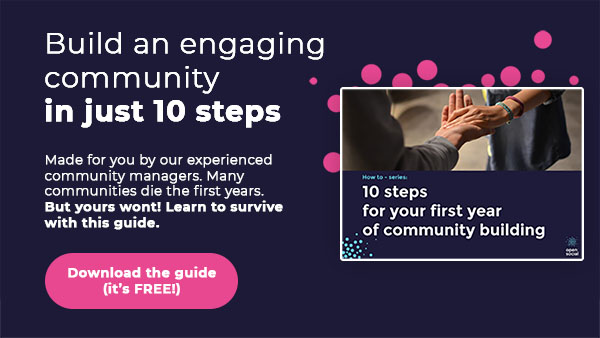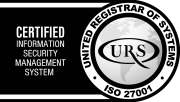Community moderation guidelines are an important aspect of community management. Keeping an eye on how members — continue reading
Community moderation guidelines are an important aspect of community management. Keeping an eye on how members interact with each other ensures that a community feels welcoming and people feel free to share their thoughts and ideas. The knowledge that the community manager has the community’s back (so to say) provides users with the trust to remain active on the platform.
The best way to ensure that members interact with each other in a respectful and constructive manner is by setting up some basic community guidelines. These can be shared in your welcome email with new members so that can learn what your community is about and how they should engage with one another.
Since you want people to feel positive about your community when they first join, make sure you focus your guidelines on what people should do, rather than what they shouldn’t. This is why we prefer to use the term ‘guidelines’ because this term feels less restrictive than other terms such as ‘house rules’, for example.
Guidelines are always a work in progress that evolves with the community over time, so don’t be afraid to get them ‘wrong’. You can always adjust them at a later date, just don’t adjust them too often to avoid confusion. It’s good to set up your community guidelines with members of the community, so the Beta period is an excellent time to discuss which guidelines are appropriate for your community.
Examples of Community Guidelines
Good community guidelines are short and simple. They let a community know how users are expected to interact with one another. Be sure to try and capture the personality and beliefs of the community and make sure you aren’t too restricting, because people may become afraid to post. The main goal of the guidelines is to ensure that people interact with each other in a civil manner and to set some boundaries for content that isn’t allowed under any circumstances (for example, personal attacks, ‘doxing’- i.e. sharing private details of a community member-, racism, and sexism).
Het is an example of some basic community guidelines to start you off:
[Your community goal]
Do
- Respect each other. This may be an online venue, but we’re all equals no matter where we share our thoughts and opinions.
- Keep your comments focused and on topic, according to each post. This helps facilitate the best, most productive conversations. If you have bigger ideas, send us an email or give us a ring. We’re happy to hear from you.
- Protect your privacy. Comments on this community are visible to anyone in this community. You shouldn’t post anything here that you wouldn’t say in public. Protect your privacy and don’t give out personal information such as email addresses, telephone numbers or street addresses.
Don’t
- Be hateful. Disagreements can lead to great progress. However, insulting individuals will not be tolerated.
- Post comments that use racism, sexism or are discriminatory or defamatory. These are not allowed and will be removed immediately.

Community Moderation
Now that you have some guidelines in place, you have a solid foundation to start moderating your community. Keep in mind that most people tend to not read the fine print, so make sure the first step towards moderation is reminding people of the guidelines.
There’s more to moderation than looking out for offensive or problematic content and discussions getting out of hand. You may also want to refer users back to existing topics or groups when they create duplicates, close inactive groups, or simply help users edit or close their accounts if they experience some kind of problem.
Open Social offers several options to help community managers moderate their communities:
- Delete content
- Edit content
- Submitting content under another user’s name
- Changing the authorship of content
- Closing comment threads
- Closing or blocking user accounts
- Content flagging (coming soon!)
However, with great power comes great responsibility, so we recommend you check our steps to moderation to understand how to best use the above toolset.
5 Steps to community moderation
- Unless the content is extremely offensive or even illegal, don’t delete content straight away since people may view this as censorship.
- Keep an eye on the discussion to see if the community corrects itself and if (other) users step in to correct the undesirable behavior.
- If the problem remains, try and help steer the conversation in the right direction by referring to the guidelines and reminding the person or people involved that this type of behavior isn’t welcome.
- If the person or people continue their behavior, contact them via a personal email or message and warn them that they will be removed from the community if they continue in this way.
- If the person or people involved still continue, block their account and delete the offending content. Be sure to make a statement to the general community explaining the situation and your decision.
At Open Social, it’s important for us to help our customers manage their online communities. That’s why we offer templates for community guidelines, FAQ’s, support and more. Their users will not only need guidance for interaction but also how to navigate through the new platform. And who knows our product better than us? 🙂 Take a look at our Modernisation Guidelines in our Community Talks center!
What are your experiences with community guidelines and moderation? Are there any rules that are absolutely essential to a healthy community? Let us know in the comments!


